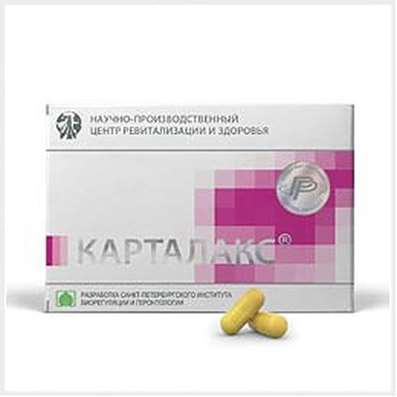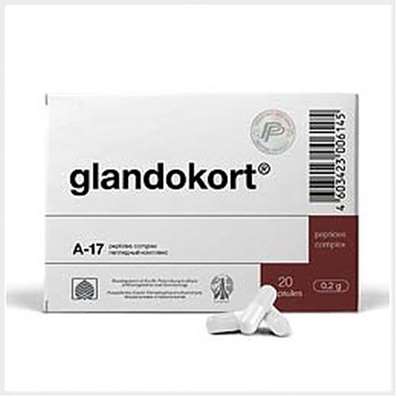Instruction for use: Sertraline
I want this, give me price
Latin name of substance Sertraline
Sertralinum (genus. Sertralini)
Chemical name
(1S, 4S) -4- (3,4-Dichlorophenyl) -1,2,3,4-tetrahydro-N-methyl-1-naphthylamine (as hydrochloride)
Gross formula
C17H17Cl2N
Pharmacological group:
Antidepressant
The nosological classification (ICD-10)
F32 Depressive episode: Adynamic subdepression; Astheno-adynamic subdepressive states; Asthenoadressive disorder; Astheno-depressive disorder; Asthenodepressive state; Astheno-depressive state; Major Depressive Disorder; Vyaloapatichesky depression with retardation; Double Depression; Depressive pseudodement; Depressive illness; Depressive mood disorder; Depressive disorder; Depressive mood disorder; Depressive state; Depressive disorders; Depressive syndrome; Depressive syndrome larviated; Depressive syndrome in psychoses; Depressed masks; Depression; Depression Depletion; Depression with the phenomena of inhibition within the framework of cyclothymia; Depression is smiling; Involutional depression; Involutionary melancholy; Involutional depression; Manic-depressive disorder; Masked Depression; Melancholic Attack; Neurotic depression; Neurotic depression; Shallow Depression; Organic depression; Organic depressive syndrome; Simple depression; Simple melancholic syndrome; Psychogenic depression; Reactive depression; Reactive depression with moderate psychopathological symptoms; Reactive depressive states; Reactive depression; Recurrent depression; Seasonal depressive syndrome; Severostatic depression; Senile Depression; Symptomatic Depression; Somatogenic depression; Cyclotymic depression; Exogenous depression; Endogenous depression; Endogenous Depressive Conditions; Endogenous Depression; Endogenous depressive syndrome
F33 Recurrent depressive disorder: Major depressive disorder; Secondary depression; Double Depression; Depressive pseudodement; Depressive mood disorder; Depressive disorder; Depressive mood disorder; Depressive state; Depressive syndrome; Depressed masks; Depression; Depression is smiling; Involutional depression; Involutional depression; Masked Depression; Melancholic Attack; Reactive depression; Reactive depression with moderate psychopathological symptoms; Reactive depressive states; Exogenous depression; Endogenous depression; Endogenous Depressive Conditions; Endogenous Depression; Endogenous depressive syndrome
F41.0 Panic disorder [episodic paroxysmal anxiety]: Panic state; Panic attack; Panic; Panic disorders
F42 Obsessive-compulsive disorder: Obsessive-compulsive syndrome; Obsessive compulsive states; Obsessive-compulsive syndrome; The Obsession Syndrome; The obsession neurosis; Obsessive-compulsive neurosis; Obsessions
F43.1 Post-traumatic stress disorder: Combat fatigue; Catastrophe Syndrome; The survivor's syndrome; Traumatic isolation; Traumatic neurosis; Traumatic syndrome; Post-Traumatic Stress Disorder
CAS code
79617-96-2
Characteristics of the substance Sertraline
Antidepressant, SSRIs.
Sertraline hydrochloride is a white crystalline powder. Poorly soluble in water and isopropyl alcohol, soluble in ethanol.
Pharmacology
Pharmacological action - antidepressant.
Selectively blocks the reuptake of serotonin by the presynaptic membrane of neurons of the brain and platelets; slightly affects the re-uptake of norepinephrine and dopamine. With prolonged use reduces the number of adrenergic receptors in the central nervous system.
After ingestion completely, but slowly, absorbed. The presence of food in the stomach increases the value of Cmax (by 25%) and shortens the time it reaches. Cmax is determined after 4.5-8.4 hours (depending on the dose). Binding to plasma proteins is 98%. At the "first pass" through the liver forms an active metabolite - N-desmethylsertralin, which (like sertraline) undergoes intense biotransformation with the participation of the cytochrome P450 3A4 isoenzyme (deaminated, hydroxylated) and conjugated to glucuronic acid. T1 / 2 - 26 hours, methylated homologue - 62-104 hours Excreted equally (40-45%) with urine and feces, with 12-14% unchanged.
Application of Sertraline
Treatment and prevention of depression of various etiologies (including accompanied by a sense of anxiety), obsessive-compulsive disorder, panic disorder (with agoraphobia or not), post-traumatic stress disorder.
Contraindications
Hypersensitivity, simultaneous use of MAO inhibitors, tryptophan or fenfluramine, unstable epilepsy, children under 6 years.
Restrictions on the use
Neurological disorders (including mental retardation), manic conditions, epilepsy, hepatic and / or renal failure, weight loss, children over 6 years of age.
Application in pregnancy and lactation
When pregnancy is possible, if the expected benefit for the mother exceeds the potential risk to the fetus.
The action category for fetus by FDA is C.
For the duration of treatment, breastfeeding should be discontinued (sertraline is found in breast milk).
Side effects of Sertraline
From the nervous system and sensory organs: drowsiness, dizziness, headache, insomnia, confusion, amnesia, ataxia, discoordination, hyper- and paresthesia, hyperkinesia, hypo- and dyskinesia, extrapyramidal disorders, convulsions, mydriasis, nystagmus, ptosis, hyporeflexia , aggressiveness, anxiety, psychosis, amnesia, apathy, depersonalization, emotional lability, euphoria, hallucinations, paranoid reactions, somnambulism.
From the cardiovascular system and blood (hematopoiesis, hemostasis): arterial hypertension or arterial hypotension, palpitation, chest pain, anemia; rarely - tachycardia, collapsoid states.
On the part of the digestive system: dry mouth, decreased appetite right up to anorexia (rarely - increased appetite, possibly as a consequence of eliminating depression), dyspeptic disorders (flatulence, nausea, vomiting, diarrhea or unstable stools, constipation), stomach cramps, pain in the stomach abdomen, pancreatitis, changes in hepatic tests, hepatitis, jaundice or liver failure, dysphagia, irritation of the mucous membrane of the gastrointestinal tract, glossitis, gingival hypertrophy, ulcerative stomatitis.
On the part of the respiratory system: a feeling of chest compression.
On the part of the genitourinary system: delayed ejaculation, decreased libido, erectile dysfunction, anorgasmia, menstrual irregularities, gynecomastia, priapism, dysuria, hyperprolactinaemia, galactorrhea.
Allergic reactions: redness of the skin, hives; swelling of the face or lips; skin rash, generalized itching, multi-form exudative erythema.
Other: swelling (including periorbital), arthralgia, lymphadenopathy, increased sweating, weight loss, withdrawal syndrome.
Interaction
When co-administered with inhibitors, MAO causes hyperthermia, myoclonus, irritability, agitation, impaired consciousness, delirium, passing into coma. Promotes cumulation (blocks biotransformation) of H1-blockers (astemizole, terfenadine, cisapride) with prolongation of the QT interval and possible development of fatal ventricular arrhythmias of the "pirouette" type. Increases the plasma level of the free fraction (displaces from the bond with proteins) H2-blockers, tricyclic antidepressants, sulfonylurea derivatives, anxiolytics, warfarin, digoxin.
Overdose
Symptoms: serotonin syndrome - nausea, vomiting, drowsiness, ECG changes, mydriasis, tachycardia, agitation, dizziness, anxiety, psychomotor agitation, diarrhea, increased sweating, myoclonus and hyperreflexia.
Treatment: the appointment of activated charcoal, symptomatic therapy, maintenance of vital functions.
Routes of administration
Inside.
Precautions for Substance Sertraline
If the patient takes antidepressants of other groups (MAO inhibitors, tricyclic), then sertraline can be administered only 2 weeks after they are withdrawn.
Women of childbearing age during treatment should use adequate methods of contraception.
Update of information
Pupillary dilatation, which occurs after the use of many antidepressants, including sertraline, can provoke an attack of angle-closure glaucoma in patients with an anatomically narrow angle of the anterior chamber of the eye.
Information for patients. The patient should be aware that sertraline intake may cause a slight dilatation of the pupils, which in susceptible individuals can lead to an episode of occlusive glaucoma.

 Cart
Cart





